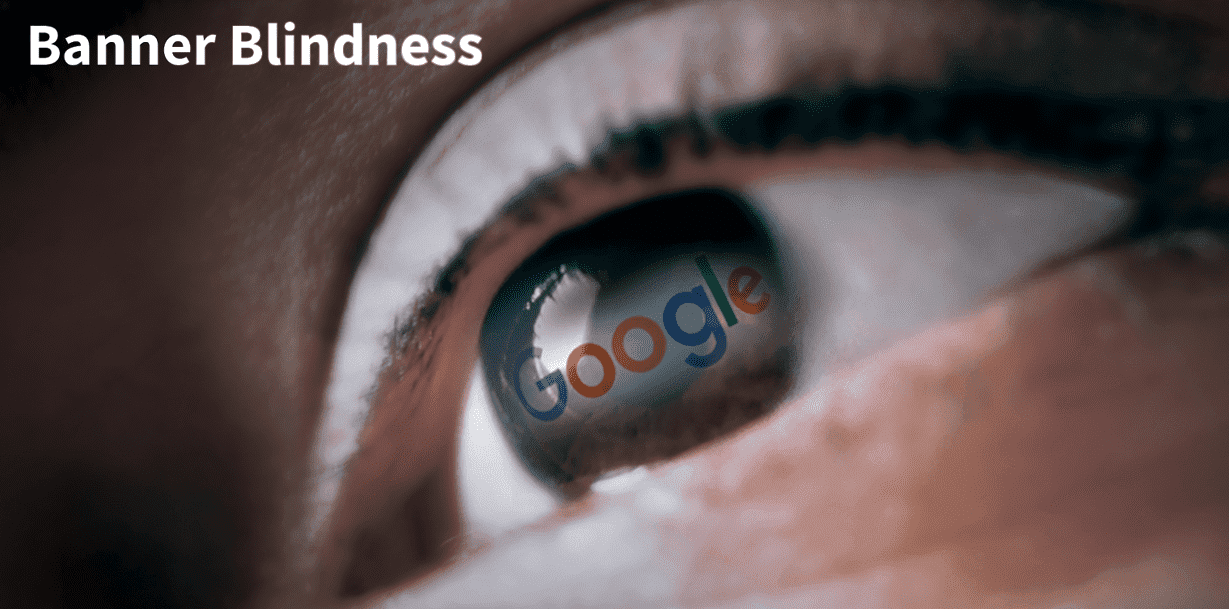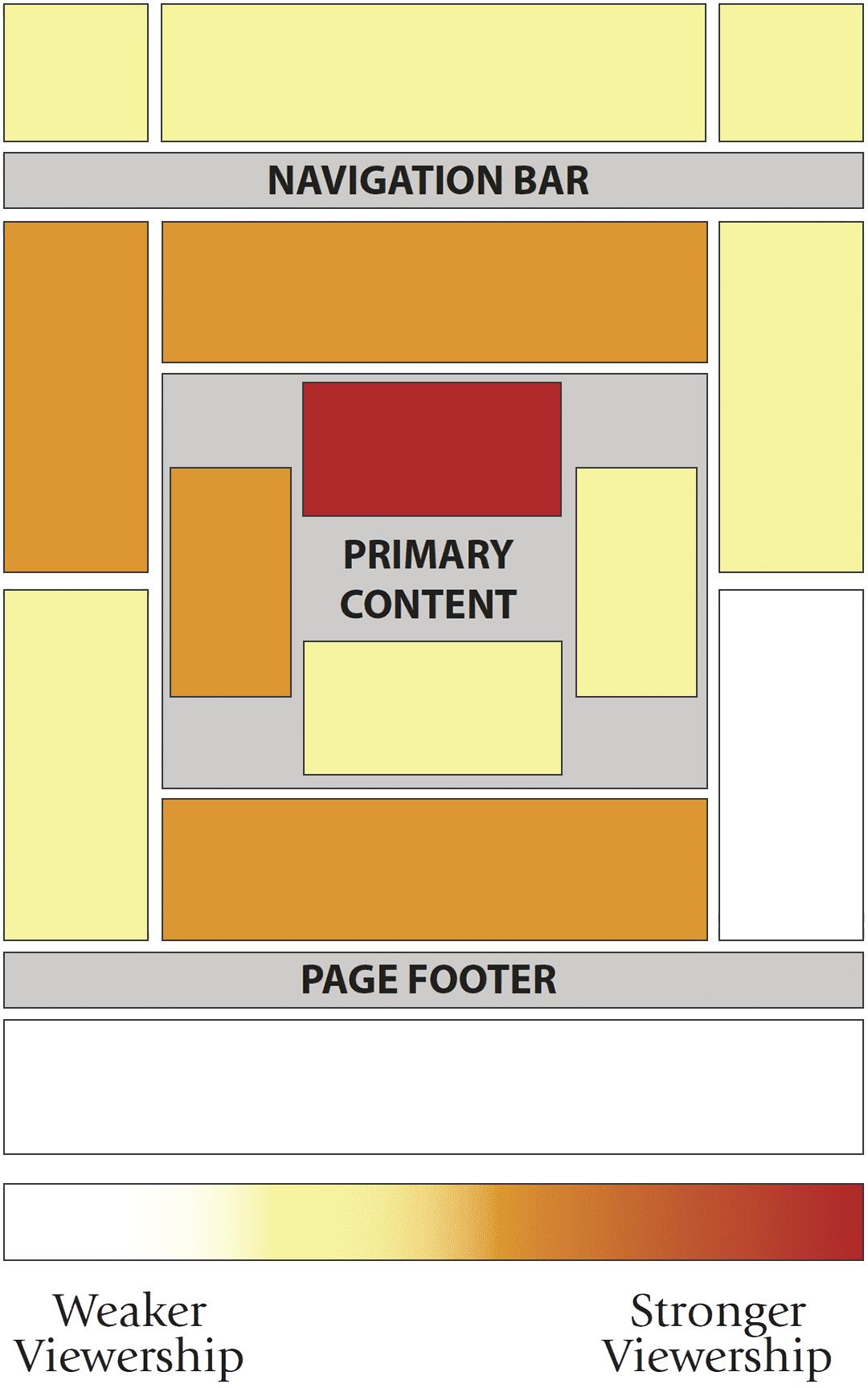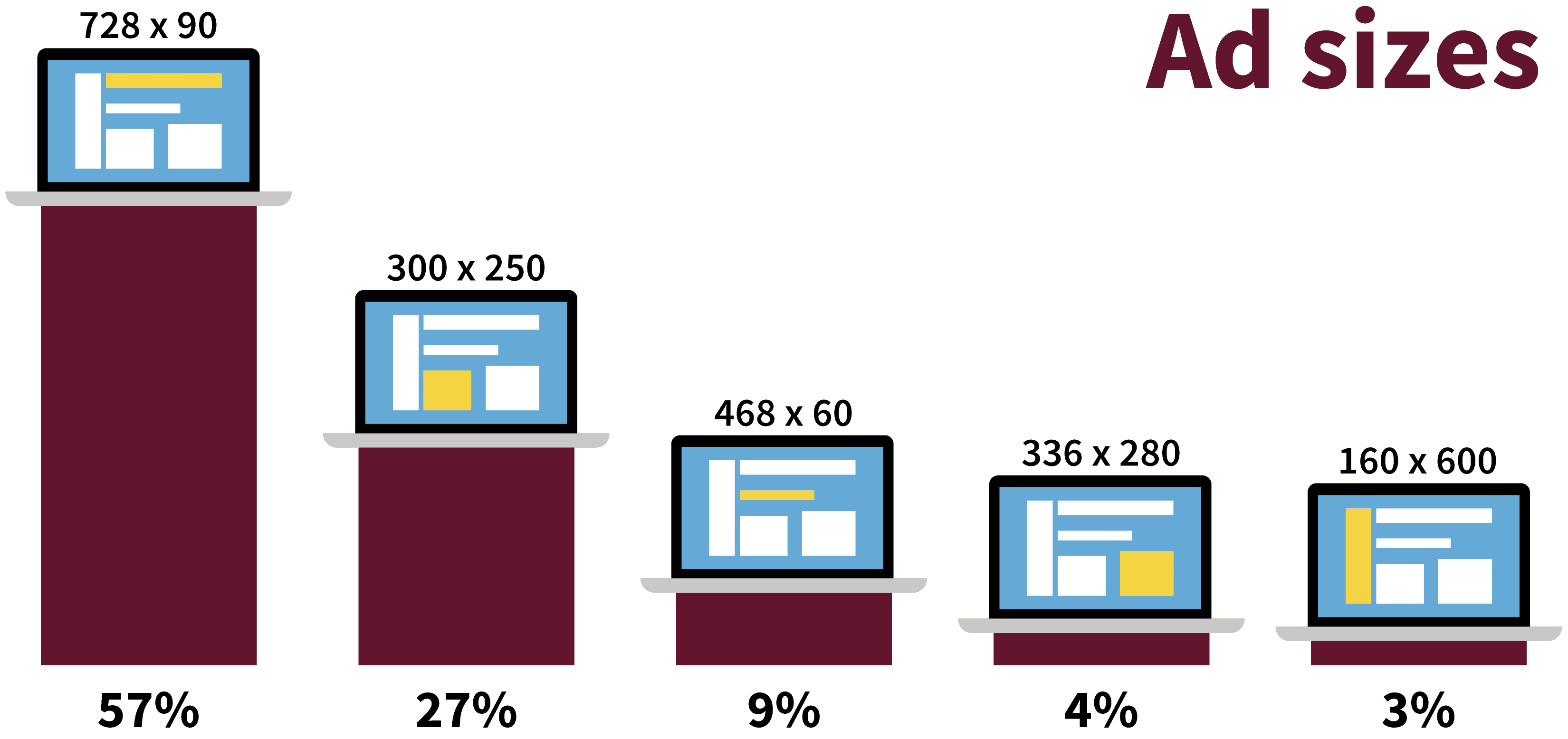Solving the mystery of effective online banner advertising
Sherlock Holmes might have excelled at evaluating internet advertising. The observant sleuth knew that people typically overlook anything that’s too obvious.
That might help to explain “banner blindness.” It’s a phenomenon where people searching for information on web pages tend to ignore flashy items clearly distinguishable from other items on the page. In other words, they miss the very thing the advertiser wants them to see.1
What the phenomenon means to advertisers remains a divisive topic among experts and researchers.

Banner blindness refers to the phenomenon of overlooking content meant to capture a viewer’s attention. The researchers who coined the term found that the phenomenon can apply to text as well as to advertisements.
Did you know?
- The first internet ad ran in October 1994, when AT&T advertised on HotWired.com.2
- Before 1995, domain names were free — they were subsidized by the National Science Foundation.3
- Internet advertising revenue more than doubled in 4 years — from $59.6 billion in 2014 to $124.6 billion in 2019.4
- The average click rate for banner (display network) ads across the internet is about 0.6%.5
Jakob Nielsen, author of Prioritizing Web Usability, is so convinced of banner blindness that he thinks it’s not worth researching further. “Users almost never look at anything that looks like an advertisement, whether or not it’s actually an ad,” Nielsen wrote in August 2007. He stated his latest eye-tracking studies confirmed “that banner blindness is real.”6
Other research, however, indicates banner advertising can work, depending upon your goals.
Other research, however, indicates banner advertising can work, depending upon your goals.
Research in the Journal of Advertising Research found that consumers who viewed an advertisement 10 times or more had greater purchase intentions than those who viewed it fewer times.7
According to a Google study, adding banner creative to one of their campaigns increased brand recall and intent by 9.4%-15.8%.8
A study reported in Digital Information World found that consumers who are retargeted with a brand’s banner ads have a 70% higher conversion rate.9
So the debate continues. In the meantime, read on for tips to get the most out of your banner advertising.
EXECUTIVE SUMMARY
“Banner blindness” is a phenomenon where people searching for information on web pages tend to ignore ads and text clearly designed to capture attention.1
Some researchers say that even if web page visitors don’t click your ad, it may have value in terms of brand enhancement.8
Banner ads generate a better response when they’re located near the center of the web page or at the end of editorial content.5
Banner ads also perform better when they blend in with the web page content rather than standing out from it.5
Tips for building better banner ads
Place your ad near the center of the page
Certain locations tend to draw more viewers, as illustrated by Google’s AdSense™ Heat Map10 (see below). Google has also found that ads at the end of editorial content do well — as if web page visitors ask themselves, “What can I do next?”
Google’s AdSense™ Heat Map

Google’s AdSense Heat Map shows that some ad locations are more effective than others. The red and orange areas reflect stronger performance. Ads near navigational tools also tend to perform well.10 Beyond location, other factors that can improve performance include an ad’s size and its ability to blend into the surrounding content and visual elements.
Target people familiar with your product
A University of Florida study found that consumers who are highly involved with a product tend to be receptive to product information and are more likely to click on a banner ad.2 So for advertisers, a little research may help you find sites which attract audiences with a pre-existing interest in your subject.
Use rich media/video formats
Ad revenue optimization platform AdPushup reports that rich media ads deliver an average engagement rate (16.54%) that is nearly eight times that of standard ads (2.14%).11 In addition, interactive video ads are 32% more memorable than standard linear ads.11 (Ads called “rich media” are typically formatted in customizable, interactive HTML. 9 Such ads expand, float on the page, create motion, play video clips, etc.)
Fit in
The University of Florida study found that a banner ad with high congruency between the advertised product category and web page content will generate more clicks than an ad with low congruency.2
Blend in
Marketing Experiments Journal notes that, “Advertising that blended in and looked like native site content performed significantly better than ads that stood out from the rest of the page.”12
Run a larger ad
A 2019 study published in Search Engine Journal found that the display ad sizes most commonly used by advertisers are:13
728 x 90 – Leaderboard – 57%
300 x 250 – Medium rectangle – 27%
468 x 60 – Banner – 9%
336 x 280 – Large rectangle – 4%
160 x 600 – Wide skyscraper– 3%

1 Benway, J. & Lane, D. (1998). Banner Blindness: Web Searchers Often Miss “Obvious” Links. Rice University Internet Technical Group newsletter, 1(3), 1-22.
2 Cho, C. (2003). Factors Influencing Clicking of Banner Ads on the WWW. CyberPsychology & Behavior, 6(2), 201-215.
3 History of the Internet Domain Name. (n.d.). DomainAvenue.com. Retrieved from http://www.domainavenue.com/faq_history.htm.
4 IAB Internet Advertising Revenue Report: Full year 2019 results & Q1 2020 revenues. (2020). The Interactive Advertising Bureau. Retrieved from https://www.iab.com/insights/internet-advertisingrevenue-fy2019-q12020/.
5 Cook, A. (2020). The 2019 Marketing Benchmarks Cheat Sheet. LinkedIn Ads Blog. Retrieved from https://www.linkedin.com/business/marketing/blog/linkedin-ads/the-2019-marketing-benchmarkscheat-sheet.
6 Nielsen, J. (2007). Banner Blindness: The Original Eyetracking Research. Nielsen Norman Group. Retrieved from https://www.nngroup.com/articles/banner-blindness-original-eyetracking/.
7 Burton, J., Gollins, J., McNeely, L., & Walls, D. (2019). Revisiting the Relationship Between Ad Frequency and Purchase Intentions. Journal of Advertising Research, 59(1), 27-39.
8 Arnold, B. (2015). Inside Google Marketing: Banner Ads Can Be Creative and Effective. Think with Google. Retrieved from https://www.thinkwithgoogle.com/marketing-resources/inside-google-marketingcreative-effective-banner-ads/.
9 Ahmad, I. (2014). 17 Incredible Retargeting Ad Stats. Digital Information World. Retrieved from https://www.digitalinformationworld.com/2014/09/infographic-retargeting-advertising-statistics.html.
10 Britton, E. (2011). This Cool Google Heatmap Will Show You Where AdSense Ads Work Best. Business Insider. Retrieved from https://www.businessinsider.com/ten-adsense-optimization-tips-2011-9.
11 Agarwal, R. (2019, January). What Are Rich Media Ads: The Complete Guide for Publishers. AdPushup. Retrieved from https://www.adpushup.com/blog/rich-media-ads/.
12 Online Ads Tested. (2007). Marketing Experiments Journal. Retrieved from www.marketingexperiments.com/improving-website-conversion/online-ads.html.
13 Shutova, E. (2019). Display Advertising Stats: SEMrush Study Reveals Top GDN Trends. Search Engine Journal. Retrieved from https://www.searchenginejournal.com/semrush-display-advertising-statsgdn-trends-study/311395/.
